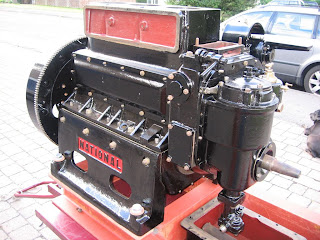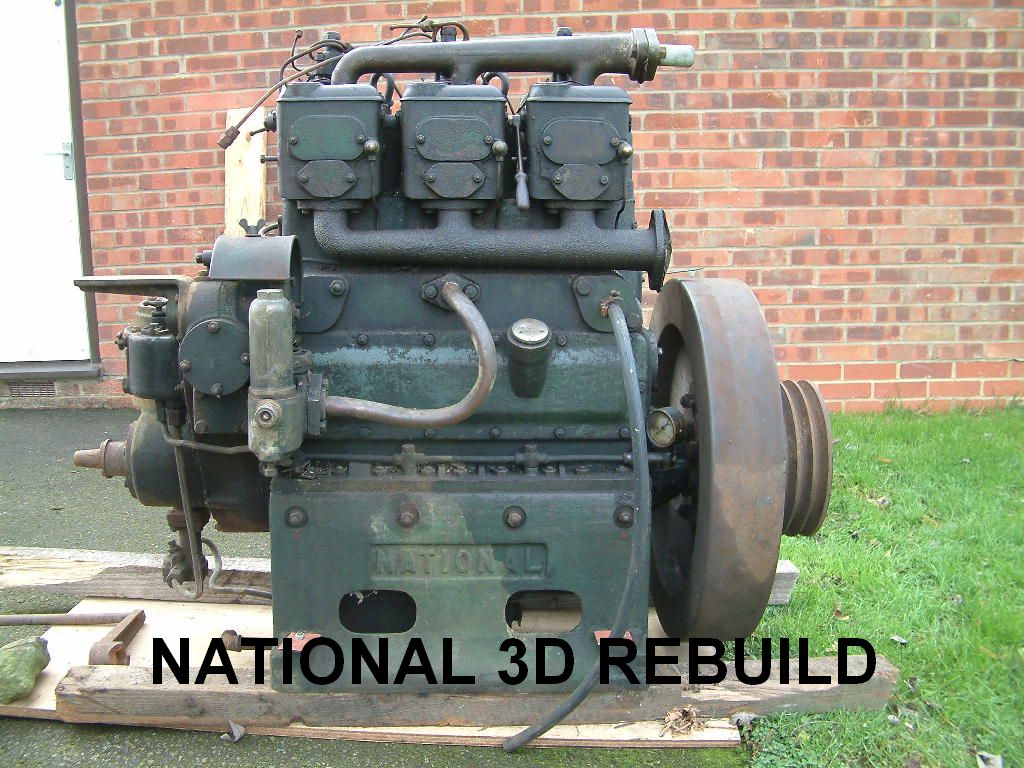'Flywheel'
It's quiet a boring heading I know, but I have finally attacked the flywheel.
Originally the engine had an industrial flywheel (as can be seen on the blog header). This would have been a problem as it did not have any teeth for an electric starter (the engine being hand start only). However, a suitable toothed marine flywheel that matched the crankshaft mounting was supplied with the engine.
So, as per usual, the task in hand was to remove all of the paint back to bare metal.
How much paint can a flywheel have on it! There were layers of the stuff!
There's a lot more surface area to a flywheel than you think. Several tins of paint stripper and many hours with a wire brush and the thing was cleaned up.
 One thing it did reveal on the inner boss was the stamping 49909. Could this have been the engine number of the 'donor' engine? If it is; thank you 49909, because your flywheel is now going to be well and truly bolted to the front of 56214. And long may it remain there (mainly because its to blood heavy to get off!).
One thing it did reveal on the inner boss was the stamping 49909. Could this have been the engine number of the 'donor' engine? If it is; thank you 49909, because your flywheel is now going to be well and truly bolted to the front of 56214. And long may it remain there (mainly because its to blood heavy to get off!).
Of course, once you get all of the old paint off and get the metalwork cleaned up, you've got to put the new stuff on. The result is:

A nice big black shiny flywheel!
Oh........ and another thing. The previous entry was with regard to the water pump. Well, here's a picci of the finished item assembled in full. I think it looks great against the black of the engine (the picci doesn't do it justice and it looks better in the flesh)









 One thing it did reveal on the inner boss was the stamping 49909. Could this have been the engine number of the 'donor' engine? If it is; thank you 49909, because your flywheel is now going to be well and
One thing it did reveal on the inner boss was the stamping 49909. Could this have been the engine number of the 'donor' engine? If it is; thank you 49909, because your flywheel is now going to be well and 
